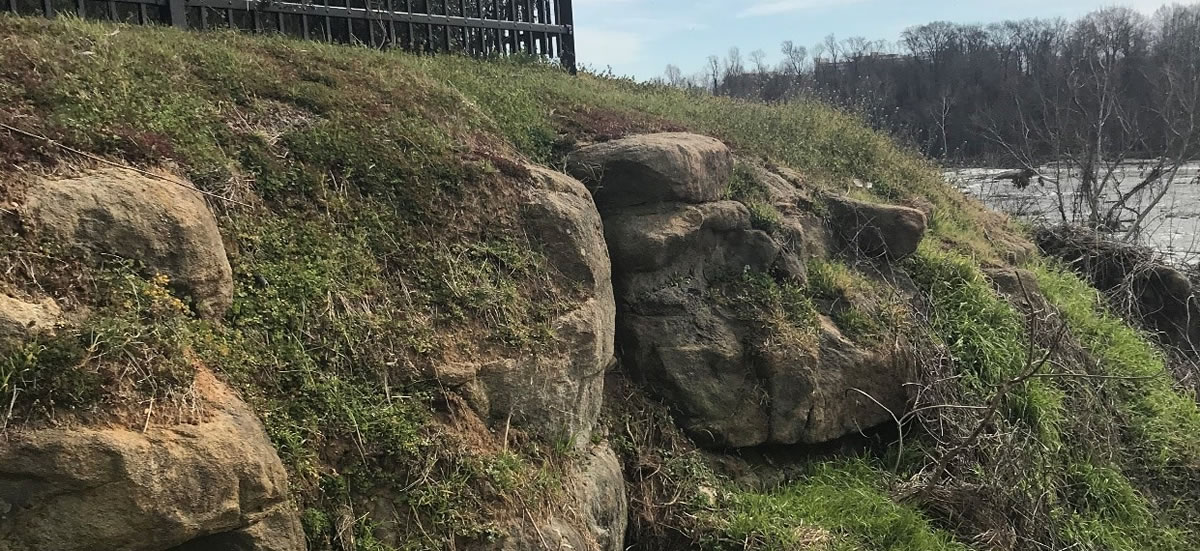The James River is one of the best-known rivers for urban freshwater recreation in the U.S., serving as a playground for swimmers, rafters, tubers, paddlers, and fish enthusiasts (depending on river levels, which change constantly with rainfall and drought).
Whitewater
The rapids directly below Hollywood constitute some of the most challenging urban whitewater in the U.S. (offering Class III and Class IV rapids during high flows). The fast-moving water is in an area called the Fall Zone, which stretches about 7 miles, from Bosher Dam at the Huguenot Bridge to the I95 Bridge. The James River drops about 100 feet in the 7-mile stretch, half of which happens in the last mile seen below the cemetery. Beyond the I95 Bridge (to the east), the river flattens and becomes tidal, traveling about 100 miles to Chesapeake Bay.
Fishing
Blue catfish is a prized catch in these waters, with giants growing up to 100 pounds. Large-mouth, small-mouth, and striped bass are favorites, as well.
River Picnics
Directly across the river is Belle Isle, a preserved city park ideal for riverside walks, and picnics on river rocks and beautiful boulders sculpted by eons of wind and water erosion.


 Large outcrops of the ancient Petersburg Granite – some of the largest in Richmond – are most obvious west of the mausoleum.
Large outcrops of the ancient Petersburg Granite – some of the largest in Richmond – are most obvious west of the mausoleum.